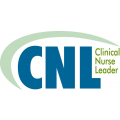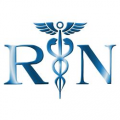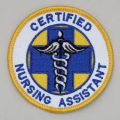Clinical nurse leader (CNL) is an emerging nursing role developed by the American Association of Colleges of Nursing (AACN) in collaboration with leaders from the practice environment. The role was created to improve patient outcomes in response to changes in healthcare delivery and health professional education. The CNL oversees the lateral integration of care for patients, and she may actively provide direct patient care in complex situations. (To avoid confusion: the clinical nurse leader fills a different role than a clinical nurse specialist, or CNS.
Latest articles
More than 2.7 million registered nurses (RNs) are employed in the United States. Collectively, they comprise the largest group of healthcare professionals in the world. While RNs may find employment in a variety of settings, more than 1.5 million work in state, local, and private hospitals. The remainder work in nursing and residential care facilities, physicians’ offices, home healthcare services, government, and education. In all settings, RNs provide essential patient care and treatment.
Almost 750,000 licensed vocational nurses (LVNs) and licensed practical nurses (LPNs) work in the United States. The duties and educational requirements are the exact same for both roles; “LVN” is simply the preferred title in the states of Texas and California. Texas employs 72,000 LVNs, while more than 60,000 LVNs practice in California. These are the two largest populations of LVNs / LPNs in the entire country.
The U.S. is home to nearly 740,000 licensed practical nurses (LPNs) and licensed vocational nurses (LVNs). The two terms are actually synonymous: 133,000 nurses in Texas and California use the title “LVN,” while the remaining ~600,000 nurses use the title “LPN.” Regardless of the preferred title, all LPNs work under the direction of doctors and registered nurses (RNs) to provide basic medical care and ensure that patients are comfortable.
Over 1.4 million certified nursing assistants (CNAs) are employed across the country. Nearly 70 percent of these professionals work in nursing care facilities and hospitals. The rest work at continuing care retirement communities, assisted living facilities for the elderly, home healthcare services, employment services, and specialty hospitals. The largest CNA populations are found in New York, California, Florida, Texas, and Pennsylvania.
The doctor of philosophy (PhD) in nursing is designed for students who want to pursue research in an academic, clinical, or scientific environment. Graduates of nursing PhD programs can assume roles as advanced practice registered nurses (APRNs), nurse educators, directors of nursing research, leaders of healthcare organizations, consultants, and even authors. Some graduates may opt to work for government agencies such as the Department of Health and Human Services (HHS) or the Agency for Healthcare Research and Quality (AHRQ).
A doctor of nursing practice (DNP) is the terminal degree for RNs pursuing a leadership role in clinical practice, advanced practice registered nursing (APRN), teaching, hospital administration, or research. Fortunately, the demand is high for professionals in each of these fields, with APRNs leading the pack. According to the Bureau of Labor Statistics, APRN employment will grow 31 percent over the next decade, much faster than the average for all occupations.
Graduate nursing certificate programs are designed for experienced registered nurses (RNs) who already hold a master of science in nursing (MSN) degree. These programs enable RNs to develop knowledge and skills in an additional practice area. Graduate certificates span a broad spectrum of specialized practice areas including nursing administration, nursing education, nursing informatics, adult health / gerontology, nursing midwifery, pediatric nursing, women’s health nursing, nursing management, palliative care, and psychiatric-mental health nursing.
Registered nurses (RNs) comprise the largest group of professionals in the healthcare industry. The typical RN receives an impressive median salary of $66,000 per year, and high-performing RNs can earn $80,000 or more annually. Many of these nurses hold just an entry-level diploma or associate’s degree in nursing (ADN). However, the very top earners hold a master of science in nursing (MSN) degree, a requirement for a lucrative position as an advanced practice registered nurse (APRN).
A direct-entry master of science in nursing (MSN) program is designed for students who hold a non-nursing bachelor’s degree and wish to pursue an advanced degree in nursing. The program takes two years of full-time study to complete, and it prepares students to sit for the National Council Licensure Examination (NCLEX), a licensure requirement for aspiring registered nurses (RNs). Graduates are prepared to assume leadership roles in hospitals, clinics, residential care facilities, physicians’ offices, and other healthcare environments.










